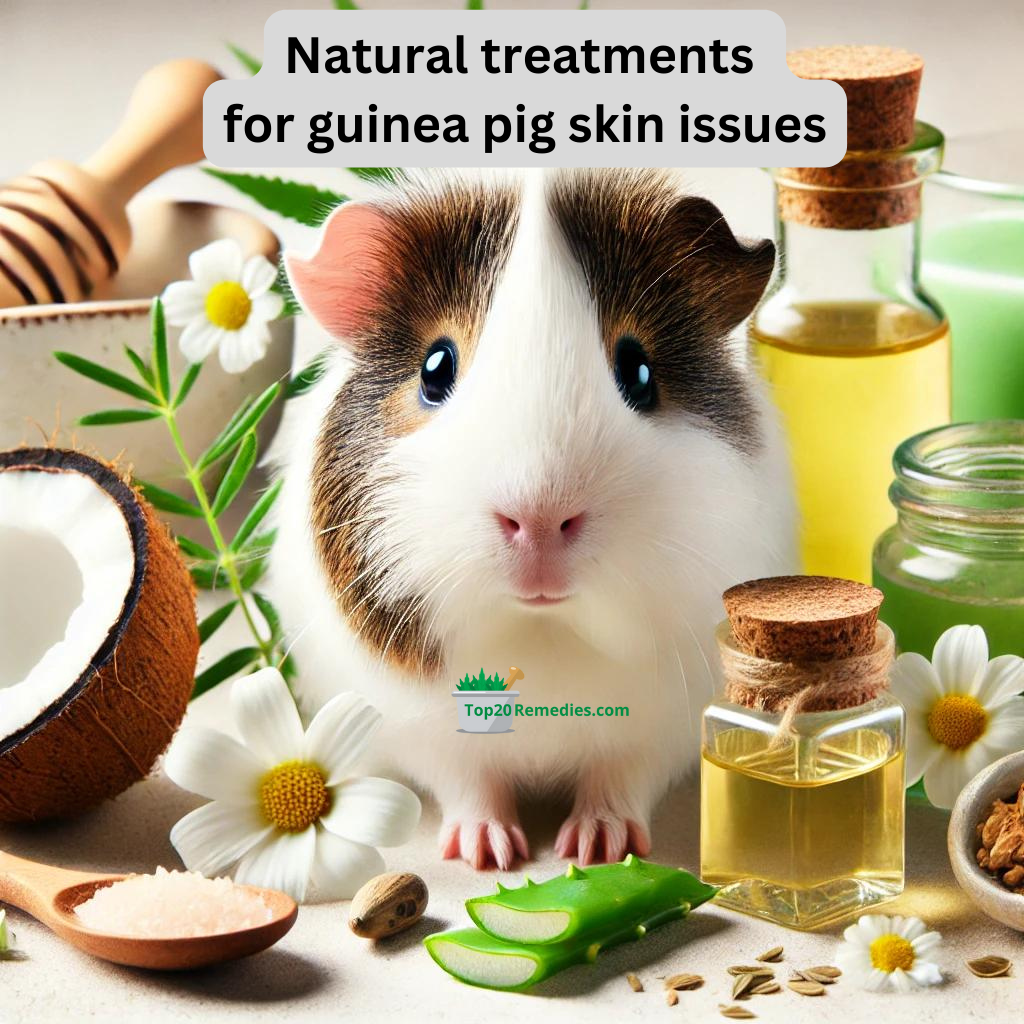Natural Treatments for Guinea Pig Skin Issues: A Comprehensive Guide
Guinea pigs are delightful pets known for their gentle nature and adorable appearance. However, like any other pet, they can suffer from skin issues affecting their overall well-being. Natural treatments can be effective in managing and treating these conditions. This article explores various natural remedies for common guinea pig skin issues, backed by research and expert advice.
Understanding Common Guinea Pig Skin Issues
Before diving into treatments, it’s essential to understand the common skin issues guinea pigs might face:
- Mites and Lice: External parasites that cause itching, hair loss, and skin irritation.
- Fungal Infections: Often caused by ringworm, leading to scaly, itchy patches.
- Bacterial Infections: These can result in abscesses and other skin infections.
- Allergic Reactions: Triggered by bedding, food, or environmental factors, causing redness and itching.
- Dry Skin: This can lead to flakiness and discomfort.
Natural Treatments for Mites and Lice
1. Neem Oil
Neem oil is a natural insect repellent with anti-parasitic properties.
- How to Use: Dilute neem oil with a carrier oil (like coconut oil) and apply it to the affected areas. Avoid the eyes and mouth.
- Effectiveness: Neem oil disrupts the life cycle of mites and lice, reducing their population and alleviating symptoms.
2. Apple Cider Vinegar
Apple cider vinegar (ACV) can help control mites and lice due to its acidic nature.
- How to Use: Mix equal parts of ACV and water, and spray it onto your guinea pig’s fur. Avoid the face.
- Effectiveness: ACV helps alter the skin’s pH level, making it inhospitable for parasites.
Natural Treatments for Fungal Infections
3. Coconut Oil
Coconut oil possesses antifungal properties that can combat ringworm and other fungal infections.
- How to Use: Apply a thin layer of coconut oil to the affected areas twice daily.
- Effectiveness: Coconut oil can soothe the skin and reduce the spread of the infection.
4. Tea Tree Oil
Tea tree oil is a potent antifungal agent but should be used cautiously.
- How to Use: Mix a few drops of tea tree oil with a carrier oil and apply it sparingly to the infected areas. Do not use undiluted tea tree oil.
- Effectiveness: Tea tree oil helps to eliminate fungal spores and promote healing.
Natural Treatments for Bacterial Infections
5. Manuka Honey
Manuka honey is known for its antibacterial properties and can be used to treat minor infections and abscesses.
- How to Use: Apply a small amount of Manuka honey to the wound and cover it with a clean bandage.
- Effectiveness: Manuka honey accelerates healing and prevents bacterial growth.
6. Aloe Vera
Aloe vera has soothing and antibacterial properties, making it ideal for treating skin infections.
- How to Use: Apply pure aloe vera gel to the infected areas.
- Effectiveness: Aloe vera reduces inflammation and helps in the healing process.
Natural Treatments for Allergic Reactions
7. Oatmeal Baths
Oatmeal baths can soothe itchy and irritated skin caused by allergies.
- How to Use: Grind oatmeal into a fine powder and mix it with warm water to create a soothing bath.
- Effectiveness: Oatmeal has anti-inflammatory properties that relieve itching and redness.
8. Chamomile Tea
Chamomile tea can calm irritated skin and reduce allergic reactions.
- How to Use: Brew chamomile tea, let it cool, and apply it to the affected areas using a soft cloth.
- Effectiveness: Chamomile’s natural anti-inflammatory properties help to alleviate skin irritation.
Natural Treatments for Dry Skin
9. Vitamin E Oil
Vitamin E oil is excellent for moisturizing and healing dry, flaky skin.
- How to Use: Apply a few drops of vitamin E oil to the dry areas and massage gently.
- Effectiveness: Vitamin E oil helps repair damaged skin and provides deep hydration.
10. Olive Oil
Olive oil is a natural moisturizer that can be used to treat dry skin.
- How to Use: Apply a small amount of olive oil to the dry patches.
- Effectiveness: Olive oil nourishes the skin and restores moisture balance.
General Care and Prevention
11. Proper Hygiene
Maintaining proper hygiene is crucial in preventing skin issues.
- How to Implement: Regularly clean your guinea pig’s cage and change bedding frequently.
- Effectiveness: A clean environment reduces the risk of infections and infestations.
12. Balanced Diet
A balanced diet is essential for healthy skin.
- How to Implement: Ensure your guinea pig’s diet includes fresh vegetables, fruits, and high-quality pellets.
- Effectiveness: A nutritious diet strengthens the immune system and promotes healthy skin.
13. Regular Grooming
Regular grooming helps detect and prevent skin problems.
- How to Implement: Brush your guinea pig’s fur regularly to remove dirt and loose hair.
- Effectiveness: Grooming helps detect skin issues early and keeps the coat healthy.
Research-Based Insights
Study on Neem Oil
A study published in the Journal of Veterinary Parasitology demonstrated neem oil’s effectiveness in reducing mite infestations in small animals. The research highlighted neem oil’s potential as a safe and natural alternative to chemical treatments.
Manuka Honey’s Healing Properties
Research in the Journal of Wound Care has shown that Manuka honey possesses significant antibacterial properties, making it an effective treatment for skin infections and wounds. Its ability to promote healing and reduce inflammation has been well-documented.
Conclusion
Guinea pig skin issues can be distressing for the pet and the owner. Natural treatments offer safe and effective solutions for managing these conditions. From neem oil for mites to coconut oil for fungal infections, numerous remedies exist. Maintaining proper hygiene, a balanced diet and regular grooming can also prevent many skin issues. Always consult a veterinarian before starting any new treatment to ensure it is safe for your pet.
Incorporating these natural treatments and preventive measures ensures your guinea pig stays healthy and happy.


